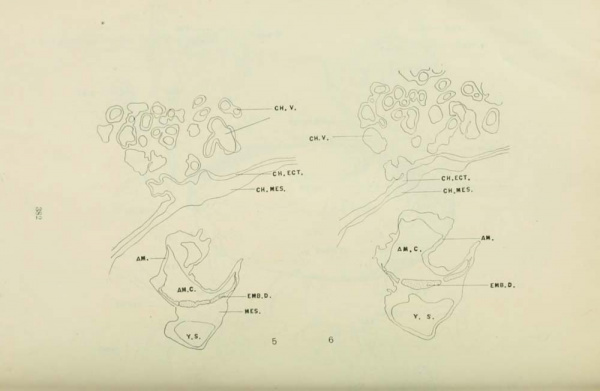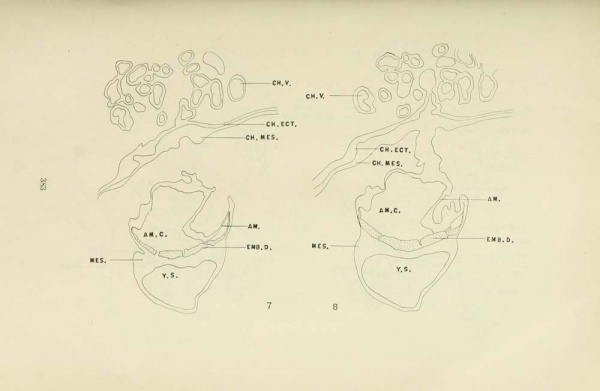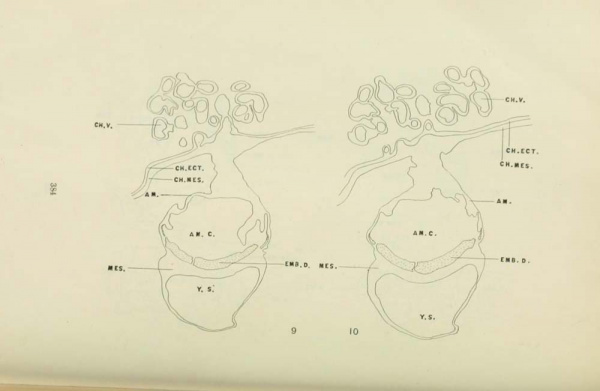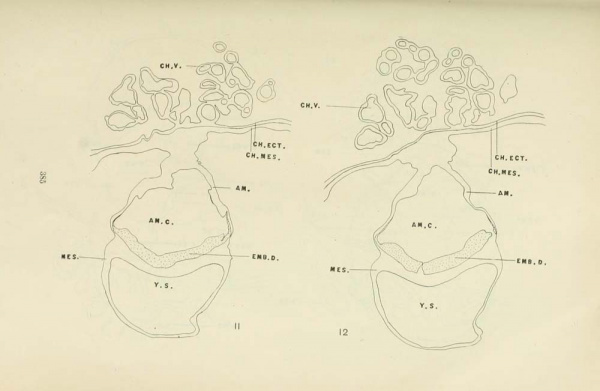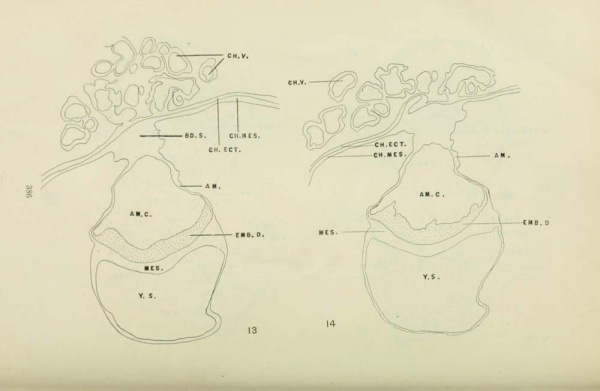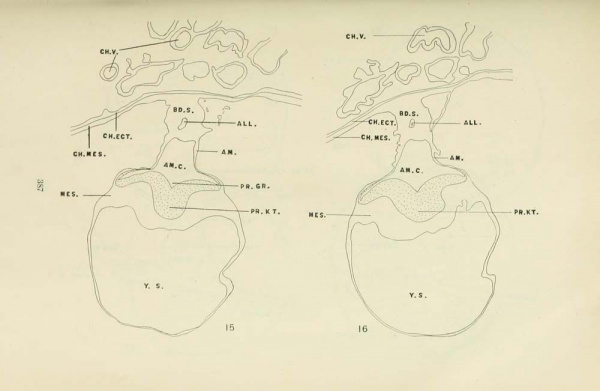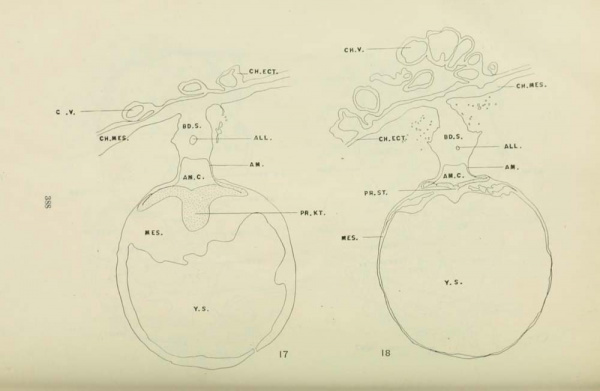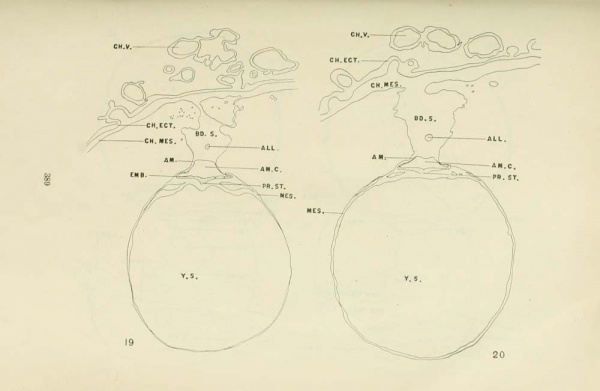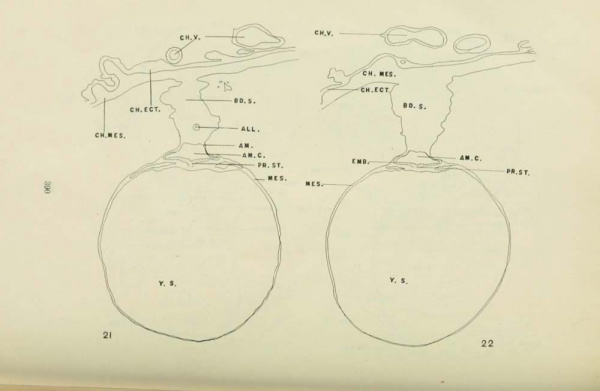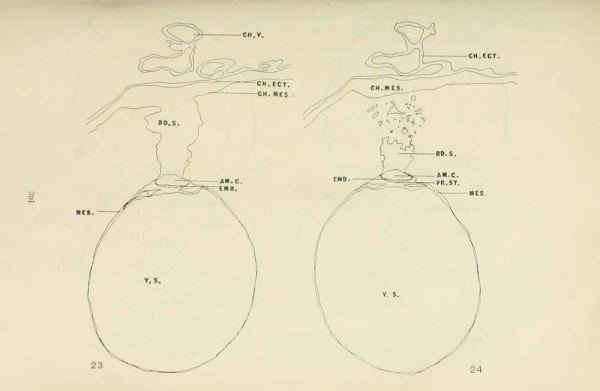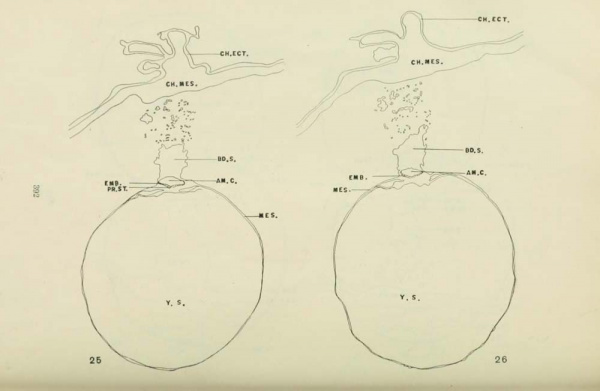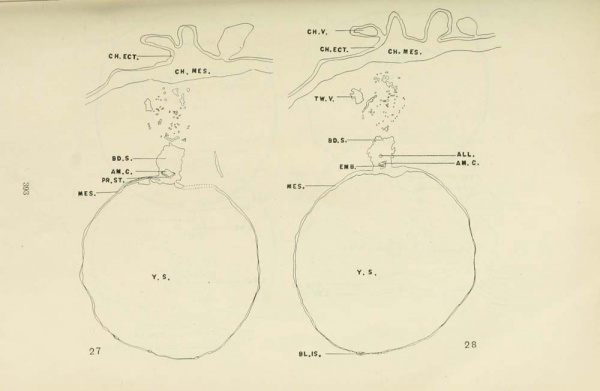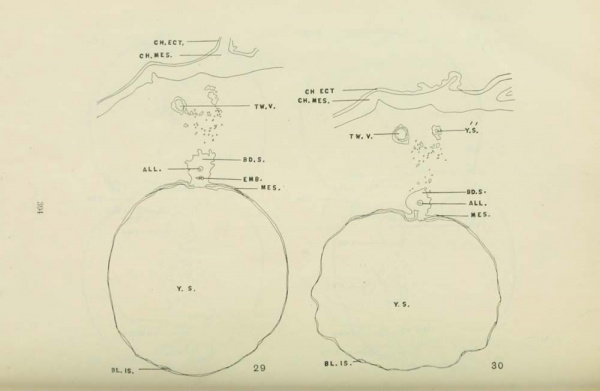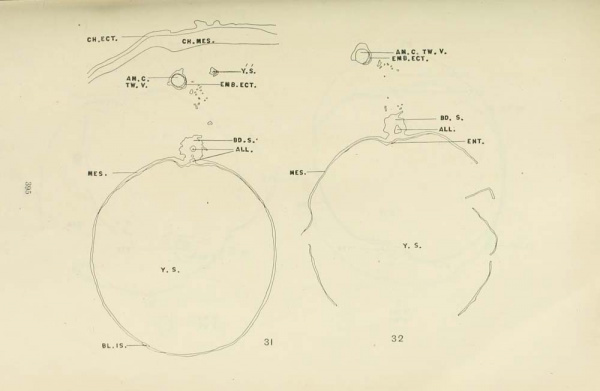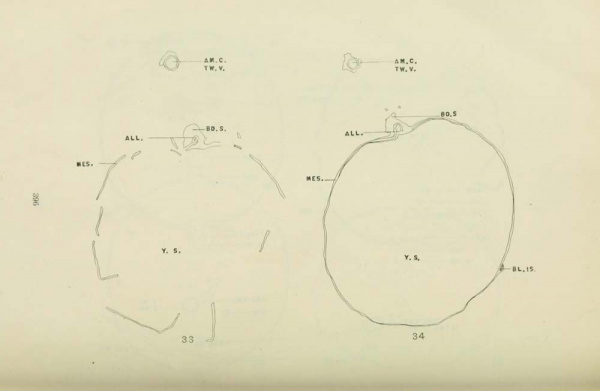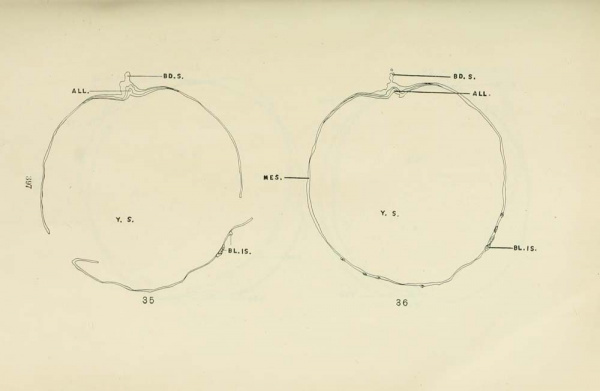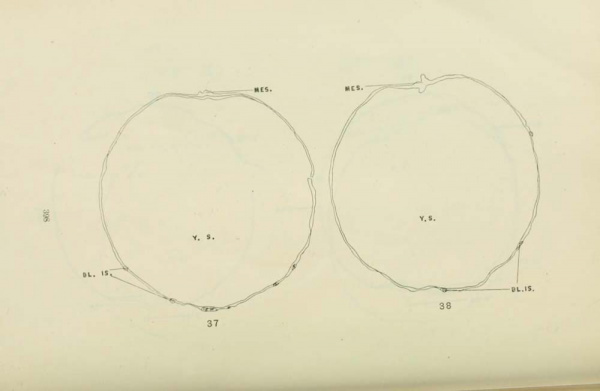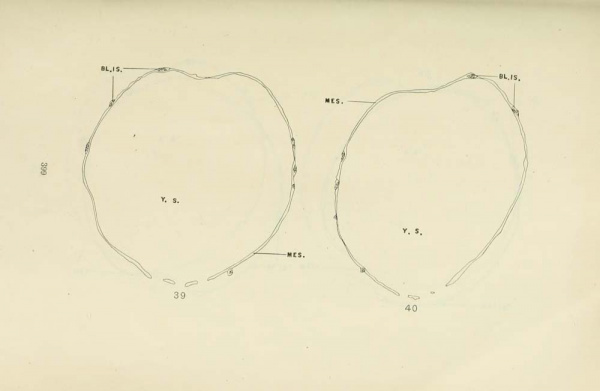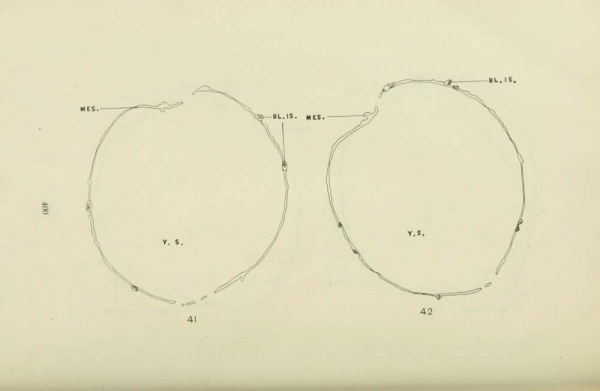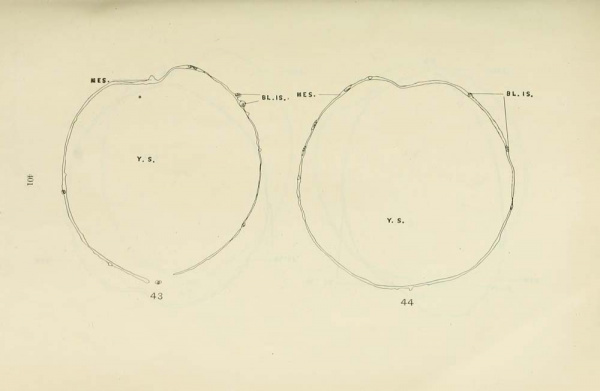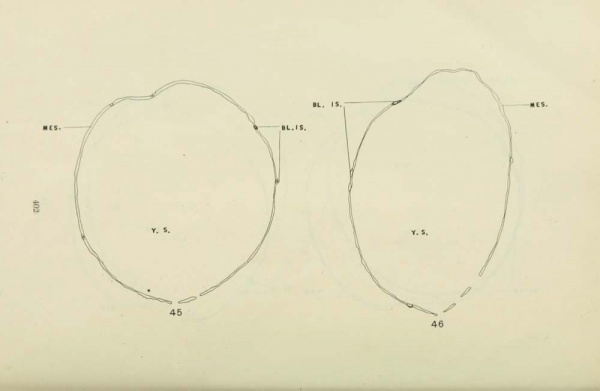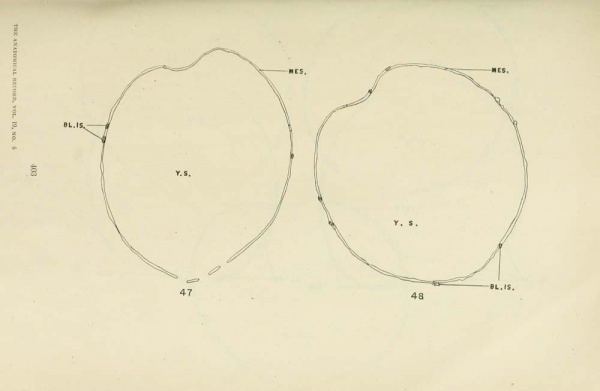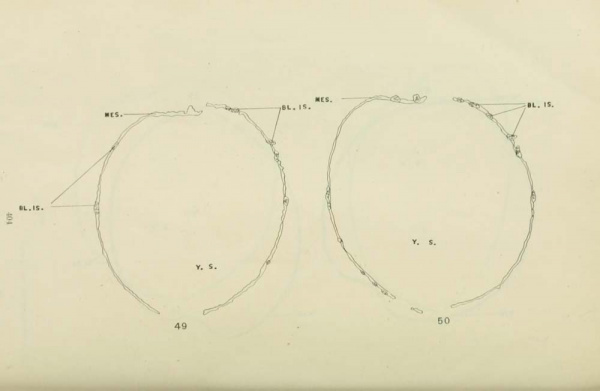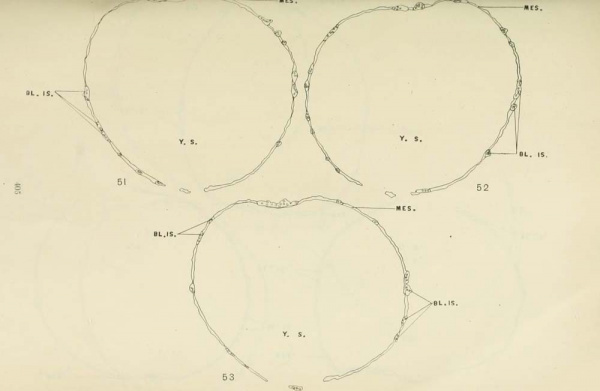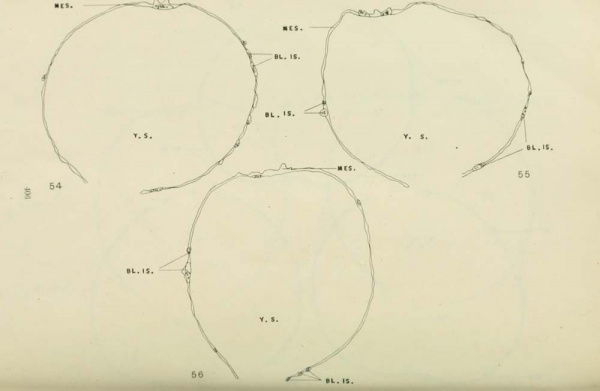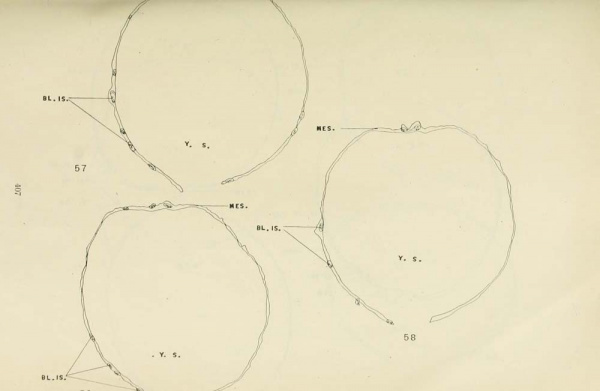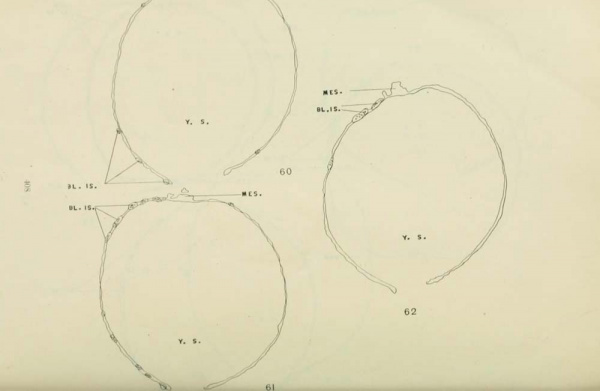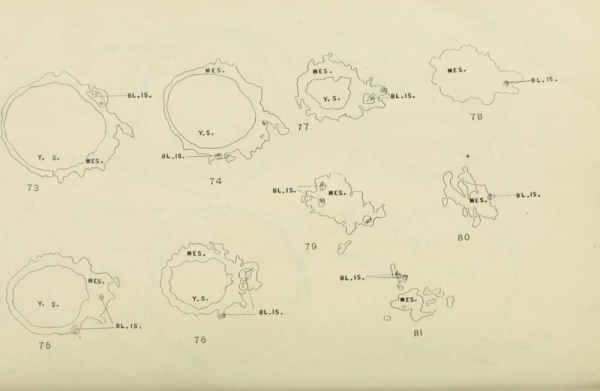Paper - A wax model of a presomite human embryo (1920)
| Embryology - 27 Apr 2024 |
|---|
| Google Translate - select your language from the list shown below (this will open a new external page) |
|
العربية | català | 中文 | 中國傳統的 | français | Deutsche | עִברִית | हिंदी | bahasa Indonesia | italiano | 日本語 | 한국어 | မြန်မာ | Pilipino | Polskie | português | ਪੰਜਾਬੀ ਦੇ | Română | русский | Español | Swahili | Svensk | ไทย | Türkçe | اردو | ייִדיש | Tiếng Việt These external translations are automated and may not be accurate. (More? About Translations) |
Turner CL. A wax model of a presomite human embryo (1920) Anat. Rec. 19: 372-412.
| Online Editor | |||||||||||||||||||||||||||||
|---|---|---|---|---|---|---|---|---|---|---|---|---|---|---|---|---|---|---|---|---|---|---|---|---|---|---|---|---|---|
| Note this historic paper was published in 1920 and our understanding of early development has improved since this historic human study.
| |||||||||||||||||||||||||||||
| Historic Disclaimer - information about historic embryology pages |
|---|
| Pages where the terms "Historic" (textbooks, papers, people, recommendations) appear on this site, and sections within pages where this disclaimer appears, indicate that the content and scientific understanding are specific to the time of publication. This means that while some scientific descriptions are still accurate, the terminology and interpretation of the developmental mechanisms reflect the understanding at the time of original publication and those of the preceding periods, these terms, interpretations and recommendations may not reflect our current scientific understanding. (More? Embryology History | Historic Embryology Papers) |
A Wax Model of a Presomite Human Embryo
Clarence L. Turner
Biological Laboratory Of Wooster College
Eighty-One Figures
Introduction
The presomite human embryo figured in this article has been fully described by Prof. George L. Streeter, of Johns Hopkins University, in a recent monograph ('19) and the twin formation of the same ovum in a shorter article (’19). He has designated the embryo as the Mateer Embryo after Doctor H. N. Mateer, of Wooster, through whose efforts it was preserved. It is not the purpose of this paper to attempt to repeat any of the work "done, but to present a series of drawings representing all the sections through the embryo and the yolk sac. Such a series of drawings makes it possible for every laboratory in which the wax—plate reconstruction process can be carried out to have a model of this embryo for study. The series should also prove of value to classes in embryology, even though the plane of sectioning is very oblique.
The writer is greatly indebted to Doctor Mateer, the owner of the embryo, for a loan of the specimen and for his generous consent in permitting this series of drawings to be published. Several models were constructed, and this series of drawings was prepared in the Biological Laboratory of Wooster College.
The Embryo
The age of the embryo was placed by Doctor Streeter at about seventeen days. The embryonic shield is approximately 1 mm. long and 0.75 mm. wide at its greatest width. Both the embryonic shield and yolk sac are surrounded by a thin layer of mesoderm and the entire vesicle is attached to the chorion by the body stalk. All the structures, with the possible exception of the allantois, are apparently quite normal.
A. Embryonic shield
The embryonic shield is oval in shape, b11t narrowsmarkedly and bends ventrally in its posterior third. The oval portion is not marked by any uneveness, but the narrow posterior third is traversed longitudinally by a shallow primitive groove. At the periphery of the shield the ectoderm is continuous, becoming thin and folding over dorsally to form the amnion.
B. Ammon and amniotic cavity
The line of demarkation between the embryo and the amnion is difficult to distinguish in many of the sections, but the amniotic ectoderm is very thin and is overlaid by mesoderm which binds it loosely to the overlying chorion. Owing to the oblique plane of sectioning, an exaggerated impression of the depth of the amniotic cavity is gained from figure 16. The cavity appears in the reconstruction as a mere cleft except at the extreme posterior end where it comes into contact with the body stalk.
C. Body stalk and allantois
The body stalk, occurring at the posterior end of the yolk sac, is a fairly compact mass of mesoderm attaching the entire vesicle to the chorion‘ (fig. 22, BD.S.). A few loose strands of mesoderm extend from the body stalk to the chorion, and at one point near the chorion the body stalk is interrupted by a large cavity. Some primitive blood-vessels are found also in the body stalk, but no attempt has been made to represent them in the drawings.
The allantois at its proximal end appears as an evagination of the yolk entoderm and within the next few sections becomes a compact round column of cells. The proximal portion of the allantois terminates abruptly and no trace of it can be found for a few sections after which it reappears as a detached segment.
In the reconstruction this detached segment shows a marked constriction.
D. Yolk sac
The yolk sac is much flattened_ dorsoventrally although its probable normal shape was nearly spherical: As the chorionic vesicle is also flattened in the same direction, it seems likely that both chorion and yolk sac were flattened by their own weight prior to fixing. On the ventral and posterior surfaces of the yolk sac are numerous blood-islands.
E. Chomlon
There are two layers present in the chorion, an inner mesodermal layer, which is loose in texture but distinct, and an outer and more compact ectodermal layer. Chorionic villi are attached to the chorionic membrane at intervals. The same layers appear in the villi thatare present in the chorionic membrane, the'ventral mass consisting of the mesodermal element and the outer layer a covering of ectoderm. A syncytial and an epithelial layer may be distinguished in the ectoderm, but they have not been shown in the figures.
F. Twin vesicle
In figure 30 there occur between the large embryo and the chorionic membrane two smaller vesicles which prove to be parts of a second smaller embryo evidently undergoing degeneration. In the larger of these two smaller vesicles a sphere of ectoderm surrounded by mesoderm can be distinguished. The ectodermal sphere enclosing an amniotic cavity is thickened on one side to form the embryonic ectoderm, while the remainder forms an amnion. The second and smaller vesicle is apparently the degenerating yolk sac of the small twin embryo. Both vesicles are loosely bound to the body stalk and to the chorion by strands of mesoderm.
Construction of Model
The plane of sectioning is represented by the line AB. The sections were made 10 ,u thick. A few sections were irregular in thickness or were lost, a number have been twisted and a few broken into fragments. However, by taking the perfect sections as guides, the imperfect sections may be made to conform to the shape as indicated in the perfect sections. With these few exceptions, the sections are in good condition. All the drawings in this series were made with a camera lucida and all the imperfections are figured as they occur in the sections.
A. Irregularities
The more outstanding irregularities are listed here with the expectation that they will prove useful for corrections during the construction of a model. The irregularities were checked by making a duplicate set of drawings with carbon paper, using one set for the construction of the model and carefully marking the necessary alterations on the other set of drawings.
Section 2 to section 9. The amnion on the right side has collapsed or has been pushed in.
Section 3 to section 15. There is a shrinkage of the mesoderm on the left side of the embryo betweenthe embryonic disk and the yolk sac.
Section 5 to section 17. An indentation in the right side of the yolk sac and the overlying mesoderm is evidently an artifact.
Section 3 to section 20. The embryonic disk is cracked in most of these sections and in a few the parts have suffered a slight displacement.
Section 14 and section 15. Two sections have apparently been lost between these two.
Section 17 . This one is 40 μm thick instead of 10 p thick.
Section 16 and section 17. The left half of the embryonic disk is bent ventrally so as to be out of adjustment.
Section 23. There is a lateral compression in this section which distorts it somewhat. The foregoing section may be taken as a guide.
Section 24. As in section 23.
Section 30. The yolk sac membrane and the overlying mesoderm are shrunken and distorted.
Section 32 and section 33. These are somewhat broken and the pieces displaced, but the general boundaries of the sections are still evident.
Section 34. The ventral half of the yolk sac has been dislocated toward the left.
Section 35. There are two slight breaks in the walls of the yolk sac.
Section 37. This section is 20 μm thick.
Section 40. The walls of the yolk sac are broken at the ventral point and are shifted toward the left in the ventral half.
Section 42. The sides of this section are somewhat compressed.
Section 46. This sectionis bent toward the left in its ventral half.
Section 47. The sides of this section are slightly compressed and the lower half is dislocated toward the left.
Section 48 and section 49. Several sections are missing between these two.
Section 50 to section 81. There are many slight irregularities in the shape of the yolk sac, but the shape may be made out by using the following sections as of normal shape: sections 58, 61, 63, 68, and 73.
B. Magnification
The sections have been cut 10 μm in thickness so that a magnification of 100 would make the wax sheets 1 mm. in thickness. In the illustrations in this article a magnification of 100 has been used, but the drawings have been reduced one-half for publication. It is suggested that they be stepped up to their original size (twice as large as represented here) when wax sheets of a thickness of 1 mm. may be used.
C. Modeling
A model such as the one illustrated in plate 1 may be constructed by the usual Borns’ wax—plate method. A more substantial model which may be handled by students may be constructed by substituting blotting-paper soaked in equal parts of beeswax and soft paraffin for wax sheets.
The structures which serve best as guide lines in building the model are the body stalk and the allantois. The posterior margin
of the amniotic cavity can also be used to advantage.
Bibliography
Streeter GL. A human embryo (Mateer) of the pre-somite period. (1920) Contrib. Embryol., Carnegie Inst. Wash. Publ. 272, 9: 389-424.
Streeter GL. Formation of single ovum twins. (1919) Johns Hopkins Hospital Bulletin 30: no. 342.
Explanation of Plate and Figures
Plate 1. Model, X 50, representing the amnion cut away on the right side exposing the embryonic shield and the amniotic cavity. The body stalk is represented as bisected to show the allantois. The mesoderm overlying the yolk sac is represented as cut away on the right side to expose the yolk sac.
Figs. 1 to 81 This is a series representing all the sections of the ovum in the plane of A B (pl. 1).
|
ALL., allantois A.M.C., amniotic cavity A.M., amnion BD.S., body stalk CH.MES., chorionic mesoderm CH.ECT., chorionic ectoderm |
PR.GR., primitive groove PR.ST., primitive streak PR.KT., primitive knot MES., mesoderm EMB.D., embryonic disk Y.S., yolk sac |
BL.IS., blood-island CH.V., chorionic villus TW.V., twin vesicle EMB., posterior portion of embryo Y.S., yolk sac of twin AM.C.TW.V., amniotic cavity of twin vesicle EMB.ECT., embryonic ectoderm of twin vesicle |
Plate 1
Model representing the amnion cut away on the right side exposing the embryonic shield and the amniotic cavity. The body stalk is represented as bisected to show the allantois. The mesoderm overlying the yolk sac is represented as cut away on the right side to expose the yolk sac. X 50
Figures
Fig 1-4
Fig 5-6
Fig 7-8
Fig 9-10
Fig 11-12
Fig 13-14
Fig 15-16
Fig 17-18
Fig 19-20
Fig 21-22
Fig 23-24
Fig 25-26
Fig 27-28
Fig 29-30
Fig 31-32
Fig 33-34
Fig 35-36
Fig 37-38
Fig 39-40
Fig 41-42
Fig 43-44
Fig 45-46
Fig 47-48
Fig 49-50
Fig 51-53
Fig 54-56
Fig 57-59
Fig 60-62
Fig 73-81
Reference
Turner CL. A wax model of a presomite human embryo (1920) Anat. Rec. 19: 372-412.
Cite this page: Hill, M.A. (2024, April 27) Embryology Paper - A wax model of a presomite human embryo (1920). Retrieved from https://embryology.med.unsw.edu.au/embryology/index.php/Paper_-_A_wax_model_of_a_presomite_human_embryo_(1920)
- © Dr Mark Hill 2024, UNSW Embryology ISBN: 978 0 7334 2609 4 - UNSW CRICOS Provider Code No. 00098G




